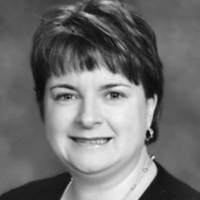This text-based course is a transcript of the webinar, “In a World of Dysphagia, What is Normal?” presented by Kim Winter, M.A., CCC-SLP.
>> Kim Winter: I received an honorarium from Speech Pathology.com to produce this presentation and I have no other financial or nonfinancial relationships to disclose.
The big question for today is, “Where does normal swallowing stop and impaired swallowing begin?” We certainly all know the basics about what is normal in terms of anatomy and physiology of the swallow, but the concept of normal swallowing goes far beyond that. I think that sometimes our perception of what is normal and what is not becomes skewed, because we are so used to seeing what we perceive to be abnormal swallows that we lose perspective of the very broad range of normal swallowing behaviors. Obviously this can have a huge impact on our decision-making skills. The challenge for us as dysphagia practitioners is to determine if what we are seeing represents an abnormal pathology or if what we are seeing can be attributed to the aging process itself. Since complaints of swallowing difficulty are more prevalent in the elderly population, it becomes difficult to determine whether complaints of dysphagia are normal age-related changes in physiology or whether they reflect diseases or even iatrogenic causes due to medications or surgical procedures, all of which occur with increased frequency in an older population. Basically, the lines between normal and abnormal swallowing become blurred.

Figure 1. Swallowing continuum
I think most of us are pretty good at identifying someone with dysphagia when the deficits fall to the extreme left side of my arrow continuum (Figure 1) or when someone has a normal swallow because there is no residue, no aspiration, no oral control problems, etc., thus placing that individual towards the far right of my spectrum. Where I think we start to have difficulty, though, is with those individuals who present with some residue, perhaps even some penetration or aspiration, and we have to determine if it is pathological or not.
What is a Normal Sized Drink?

